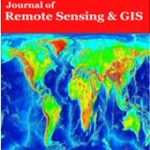Open Access

B. Pradeep Kumar

K. Raghu Babu

B. Narayana Swamy

T. Madhu

P. Padma Sree

M. Rajasekhar
- Lecturer Department of Geology, Yogi Vemana University, Kadapa Andhra Pradesh India
- Lecturer Department of Geology, Yogi Vemana University, Kadapa Andhra Pradesh India
- Lecturer Department of Geology, Sri Venkateswara University, Tirupathi Andhra Pradesh India
- Lecturer Department of Geology, Sri Venkateswara University, Tirupathi Andhra Pradesh India
- Lecturer Department of Geology, Government College (A), Anantapur Andhra Pradesh India
- Lecturer Department of Geology, Yogi Vemana University, Kadapa Andhra Pradesh India
Abstract
Dolomite CaMg (Co3)2, is the common rock forming mineral and composed of the carbonates of calcium and magnesium with an equivalent proportion. Dolomite is the primary integral of the sedimentary rock called dolostone and the metamorphic rock called as dolomitic marble. Our method is allowing to confidently determine the location and their boundaries of local geological structures that are likely to contain dolomite resources in the study area of Anantapur, AP, India. Geospatial techniques like Remote Sensing and Geographical Information System are very useful for the estimation of natural resources using the Band rationing techniques.
Keywords: Band rationing, dolomite, remote sensing and GIS, sedimentary, structures
[This article belongs to Journal of Remote Sensing & GIS(jorsg)]
Browse Figures
References
1. Abdullah A, Nassr S, Ghaleeb A. Landsat ETM-7 for lineament mapping using automatic extraction technique in the SW part of Taiz Area, Yemen. Global J Human Social Sci. 2013; 13(3): 35–37p.
2. Abdelhamid G, Rabba I. An investigation of mineralized zones revealed during geological mapping, Jabal Hamra Faddan—Wadi Araba, Jordan, using LandsatTM data. Int J Remote Sens. 1994; 15(7): 1495–1506p.
3. Aydogan D. Extraction of lineaments from gravity anomaly maps using the gradient calculation: Application to Central Anatolia. Earth planets space. 2011; 63(8): 903–913p.
4. Banerjee A. Estimation of dolomite formation: Dolomite precipitation and dolomitization. J Geolog Soc India. 2016; 87(5): 561–572p.
5. Friedman GM, Sanders JE. Origin and occurrence of dolostones. In Dev Sedimentol.1967; 9: 267–348p.
6. Kumar BP, Babu KR, Rajasekhar M, et al. Assessment of land degradation and desertification due to migration of sand and sand dunes in Beluguppa Mandal of Anantapur district (AP, India), using remote sensing and GIS techniques. J Ind Geophys Union. 2019; 23(2): 173–180p.
7. Kumar BP, Babu KR, Rajasekhar M, et al. Identification of land degradation hotspots in semiarid region of Anantapur district, Southern India, using geospatial modeling approaches. Model Earth Syst Environ. 2020; 6(3): 1841–1852p.
8. ˆPradeep Kumar B, Raghu Babu K, Rajasekhar M, et al. Change Detection of Land Use/Land Cover using Geospatial Techniques: A Case Study of Narpala Mandal, Anantapur District, Andhra Pradesh, India. J Remote Sens GIS. 2019; 10(2): 6–12p.
9. von Morlot A. Ueber Dolomit und seine künstliche Darstellung aus Kalkstein. Braumüller und Seidel; 1847.
10. Van Tuyl FM. The origin of chert. Am J Sci. 1918; 4(270): 449–456p.

Journal of Remote Sensing & GIS
| Volume | 12 |
| Issue | 1 |
| Received | December 17, 2020 |
| Accepted | February 1, 2021 |
| Published | February 1, 2023 |

